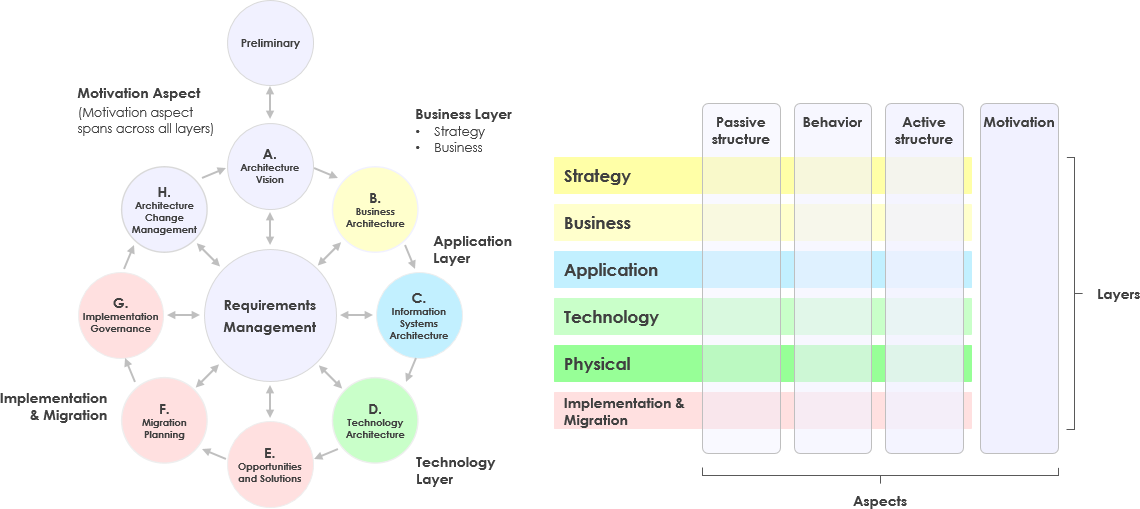Mastering Enterprise Architecture with ArchiMate and TOGAF: The Visual Paradigm Advantage
In today’s rapidly evolving landscape of enterprise IT, organizations face the critical challenge of managing complex systems, intricate processes, and organizational structures. To address this, two industry-leading frameworks have emerged as essential tools: ArchiMate and TOGAF.

Understanding ArchiMate
- ArchiMate, developed by The Open Group, is a modeling language specifically designed for visualizing, describing, and analyzing enterprise architectures.
- It provides a standardized vocabulary and graphical notation to represent various aspects of an organization, including business processes, information systems, and technological infrastructure.
- ArchiMate’s strength lies in its ability to create a holistic view of an enterprise, enabling stakeholders from diverse backgrounds to understand and communicate the organization’s elements effectively.
- This shared understanding facilitates decision-making, strategic planning, and successful implementation of enterprise-wide initiatives.
The TOGAF Connection
- TOGAF (The Open Group Architecture Framework) is a comprehensive methodology for developing and managing enterprise architectures.
- While ArchiMate and TOGAF are distinct frameworks, they complement each other:
- TOGAF serves as the overarching process and governance model for enterprise architecture.
- ArchiMate provides the language and notation to represent architectural elements.
- Together, they create a powerful synergy, aligning strategic objectives with operational needs.
The Visual Paradigm Advantage
Visual Paradigm, a leading provider of enterprise-grade software solutions, empowers organizations in their enterprise architecture initiatives through seamless integration of ArchiMate and TOGAF:
-
Intuitive ArchiMate Modeling:
- Visual Paradigm’s ArchiMate modeling tool offers an intuitive interface.
- Architects, IT professionals, and business stakeholders can easily create, collaborate, and analyze enterprise architecture models.
- Comprehensive support for the ArchiMate 3.1 specification ensures compliance with industry standards.
-
TOGAF Integration:
- Visual Paradigm’s TOGAF-based enterprise architecture modeling solution, combined with ArchiMate capabilities, allows seamless application of the TOGAF methodology.
- Alignment with industry best practices and governance frameworks is assured.
-
Collaborative and Versioned Environments:
- Collaborative features enable multiple users to work simultaneously on ArchiMate and TOGAF models.
- Version control and change tracking ensure up-to-date information, streamlining decision-making.
-
Comprehensive Reporting and Analysis:
- Visual Paradigm’s robust reporting tools generate comprehensive views of enterprise architecture.
- Impact analysis, gap identification, and performance assessments inform informed decision-making.
-
Seamless Integration with Other Tools:
- Visual Paradigm seamlessly integrates with other essential tools, enhancing overall efficiency.
Visual Paradigm empowers organizations to master enterprise architecture by combining the strengths of ArchiMate and TOGAF, fostering strategic alignment and operational excellence.

